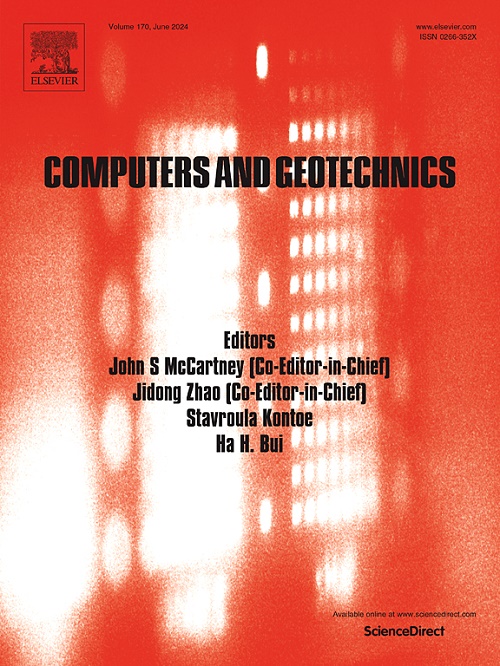Study on the mechanical behavior and energy characteristics of rocks with closed cracks based on combined finite-discrete element method
IF 5.3
1区 工程技术
Q1 COMPUTER SCIENCE, INTERDISCIPLINARY APPLICATIONS
引用次数: 0
Abstract
Many serious catastrophes are caused by complex cracks naturally distributed in rock masses. Understanding the mechanical behavior and energy evolution of rocks with closed cracks in different geometrical properties is crucial. This study presents a comprehensive investigation into the influence of crack inclination, length, and location on mechanical behavior, damage characteristics, and energy evolution in rocks. The findings demonstrate that the closed cracks significantly alter the stress–strain. The peak strength and elastic modulus exhibit an asymmetric U-shaped variation with increasing crack angle, decreasing quadratically with increasing crack length, and the crack location also affects the mechanical properties. Furthermore, the inclination angle and location of closed cracks considerably affect the damage characteristics. Cracks near the upper boundary of the specimen are less likely to propagate. Regarding energy evolution, this study presents a novel method using the residual energy index to assess the impact characteristics. The residual energy index initially decreases and then increases with increasing crack inclination. The residual energy index initially decreases and then stabilizes as the crack length increases, with the critical crack length identified as 15 mm. These findings provide a theoretical foundation for understanding dynamic hazards and determining the relevant hydraulic fracturing parameters.
求助全文
约1分钟内获得全文
求助全文
来源期刊

Computers and Geotechnics
地学-地球科学综合
CiteScore
9.10
自引率
15.10%
发文量
438
审稿时长
45 days
期刊介绍:
The use of computers is firmly established in geotechnical engineering and continues to grow rapidly in both engineering practice and academe. The development of advanced numerical techniques and constitutive modeling, in conjunction with rapid developments in computer hardware, enables problems to be tackled that were unthinkable even a few years ago. Computers and Geotechnics provides an up-to-date reference for engineers and researchers engaged in computer aided analysis and research in geotechnical engineering. The journal is intended for an expeditious dissemination of advanced computer applications across a broad range of geotechnical topics. Contributions on advances in numerical algorithms, computer implementation of new constitutive models and probabilistic methods are especially encouraged.
 求助内容:
求助内容: 应助结果提醒方式:
应助结果提醒方式:


